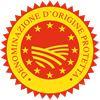Description
The Carne Barrosã PDO is produced from the Barrosã breed of cattle, a native breed of the plains of Barroso.
Production Area
Carne Barrosã PDO beef is produced in the districts of Viana do Castelo, Braga and Vila Real.
Production Method
This cow is reared principally by small, family farmers and therefore in small numbers. Their feed varies according to the area in which they are reared: in the Minho region they are nourished on green forage and maize straw; in the Tableland of Barroso, on the other hand, they are fed on hay made with the grasses from the marshes.
Appearance and Flavour
Carne Barrosã PDO varies from pink to dark red in colour, depending on the age of the animal.
History
The history of Carne Barrosã PDO beef is linked to the Barrosã breed of cattle which has its origins in the Mauritanian species which arrived in Portugal from North Africa even before the country itself came into being in 1143. This breed survived, thanks to the inhabitants of Douro and Minho, despite the arrival of other breeds in the country such as the Iberica and the Aquitana.
Gastronomy
Carne Barrosã PDO must be kept at a low temperature which should not exceed 7°C. It is never frozen unless this is done immediately, at source, at the time of butchering. Once bought, the meat can only be kept in the fridge for a few days. Because Carne Barrosã PDO beef is fine textured, succulent and tender it is at its best simply grilled or roast with very little seasoning. Different cuts of this beef is used in the preparation of excellent local dishes such as assados no forno, cozido à nortenha or portuguesa, estufados and rancho. Even the tripe and hooves are used in dishes such as tripas à moda do Porto, rancho nortenho and escalopes de vitela à Barrosã.
Marketing
This beef is sold as Carne Barrosã PDO in three categories: Carne de Vitela from cows slaughtered between five and nine months old and weighing between 70 kg and 130 kg; Carne de Novilho, cows slaughtered between 9 and 36 six months old, weighing at least 130 kg; lastly Carne de Vaca, cows slaughtered between three and four years old with a minimum weight of 130 kg. It is sold whole or prepacked in clearly labelled and identified cuts and joints.
Distinctive Features
Cattle of the Barrosã breed are light chestnut coloured and of medium size. They have survived the influx of other breeds in the Carne Barrosã PDO area and are well known for the quality, flavour and tenderness of the meat.







